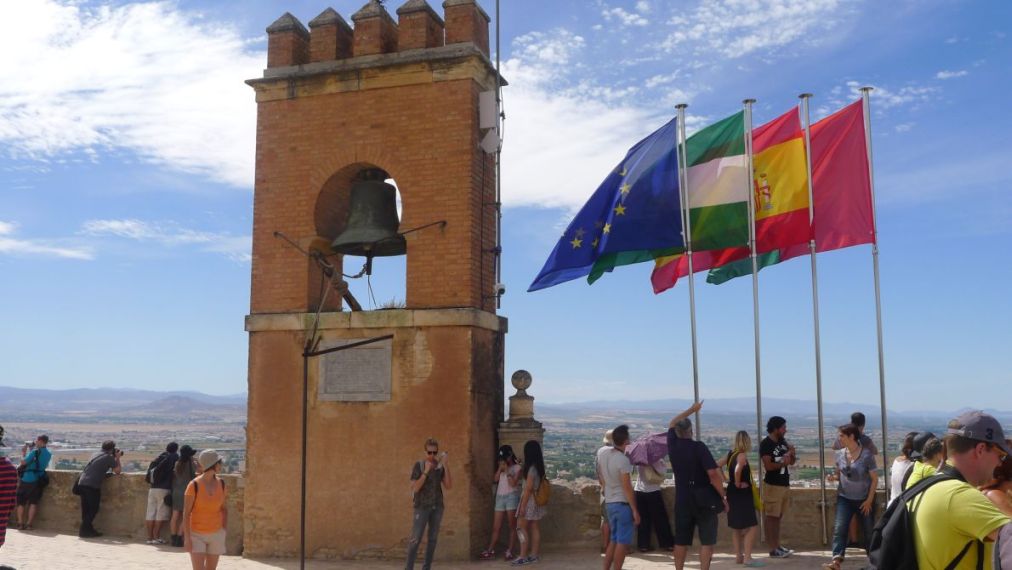
12 days in Spain & 4 days in Paris- 9/12/14- 9/9/28/14
4 days in Seville -Day 3-Day trip to Granada
Alcazaba

The exterior of the Alcazaba
The Alcazaba is the oldest and most ruined part of the complex of the Alhambra. It was built in the mid-13th century by the Sultan Alhamar, the founder of the Nasrid dynasty, after he fled from northern Andalucia and established what was to be the last Moorish stronghold against the Christian crusaders.
The Alcazaba was abandoned and not cared for during a long time and it was not until the late 19th century and beginning of the 20th century that restoration, exploration and plumbing works were started.
|
|
|
It is a huge complex, first you have to walk through passages, court yard, uneven terrain to reach to the biggest tower at the tip of the complex...

going through ruins...

Same ruins view from the top of the tower.
|
Not sure what this was meant for but it is so tiny for a person to go down. It is also really deep underground. |
It looks like this was part of a bath house. |

We have reached the summit of the Alcazaba - The Vela Tower.
This is the tower with the biggest dimensions. It is a square shaped tower, measuring 16 meters on each side by 26,80 meters high. It has four floors and an underground floor with a silo and an underground dungeon. The top of the tower originally had merlons, but in 1522 they were destroyed by an earthquake.

Four flags flying over the summit: The blue of the European Union, the green and white of Andalucia, the red and yellow of Spain, and the red and green of Granada.
|
|
|
This is the most symbolic tower of the Alhambra. The bell is used by the Arabs to announce disasters. From its privileged position the bell can heard most part over Granada, the hill tops, the districts, etc, and therefore it was a very important tower for the defense and protection of the fortress.

View of the city of Granada from the top of the Alcazaba

More view of the city.




Resting a bit before heading to the next site.
|
|
|
Nerja Algarrobo Tree on the Alhambra ground. It is a species of flowering evergreen shrub or tree belonging to the pea family, widely cultivated for its edible beans.
During our trip we ate them many times...

Passing by cannons. They were probably meant to protect the fortress from potential invaders.
|
|
|
We are heading to the Generalife Gardens... It is quite a way so this is what we see along our path....
The Alhambra did not have a master plan for the total site so the layout is not well throughout and there are many construction phases from the original 9th century to the 16th century.
Some buildings are are at odd positioning to each other.

Water lilies in a rectangular pound.
|
|
|
|
|
|

Beautiful bed of flowers.
|
|
|
We are now entering the Palacio del Generalife.
Next.. Granada part 3